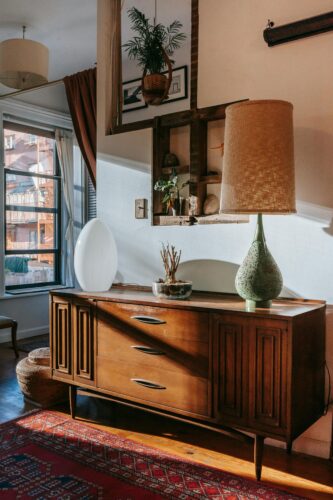Making Sure the Pieces in Your Environment Promote Well-Being
Q: I am having a hard time deciding what pieces to keep and what items to “release”. I have many items that have sentimental memories, and yet they aren’t what I would have picked to live in my current home.

A: Most of us have items in our homes that have belonged to others. Because we are affected strongly, either positively or negatively by our environment, I have helped clients understand how some furniture and accessory pieces, possibly with family history, may affect them often though these pieces are cherished, because of the relationship they have had with the people who gave it to them.
Many people live with pieces that may have been given to them, that they dread having in their homes, yet they feel an obligation to keep them. Sometimes we remember how much these pieces meant to the people who owned them before us and would feel guilty letting go of them, but they may give us feelings of sadness or anger or just nostalgia. These items may even be a burden to keep because we have no place to put them.
Several years ago, I decided to sell a house full of antiques that had been given to me by my parents, who had been in the antique business in New York. When the shipper came to pick up all the antiques and prepare them for packing to the dealer who bought them, I asked the shipper not to pack anything until the next morning. Being apprehensive, it was important to me to see how I’d feel when I awoke the next day and not see those precious pieces from my parents. Much to my surprise, I had a sense of relief, not to have the lovely antiques I had lived with all my life. I realized that these pieces were my heritage, but not my taste. I am grateful to have had them and now I am able to decorate for me and make my own personal statement in my home.
When decorating your home be aware of how the objects you are placing everywhere make you feel. Do they bring you joy and look beautiful to you? It is a source of happiness and well-being to surround yourself with what you love to see. This way loving thoughts stimulated by the environment will bring you calmness and serenity where you need it the most. If you feel good in your environment, your family and guests will feel it too. You create your environment and others will respond.
Recently a friend told me (that after reading my book) she had decided to redecorate her bedroom. She began by getting rid of the pieces she didn’t like. She also told me that she had been totally unaware that those pieces that had belonged to her ex-mother-in-law were causing her stress. Once they were gone, she was relieved not to have to see them anymore and even slept more peacefully.
In his book, “The Four Agreements,” Don Miguel Ruiz writes, “Letting go of the past means you can enjoy the dream that is happening right now. We don’t need to know or prove anything. Just to be, to take a risk and enjoy your life, is all that matters. Say no when you want to say no, and yes when you want to say yes. You have the right to be you.”
Sometimes the most difficult thing to do is tell the person gifting us that we don’t want something. Most importantly, we need to know how we tell this person gently; however, it’s better to tell the truth. Tell them that you know the piece is significant and lovely, yet it does not work in your environment. When the offering doesn’t fit, I have suggested that my clients take pictures of these pieces and put them in an album, or put the gift into storage, use it as a re-gift, sell or donate it.
Follow your heart in these decisions and live with the pieces that give you comfort, confidence, and joy. Always remember, “Rooms and objects have no feelings, YOU do!”
Barbara Kaplan, ALLIED ASID, IFDA, WATT
Your “Holistic” Interior Design, Lifestyle, & Color Consultant
